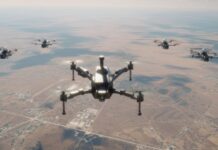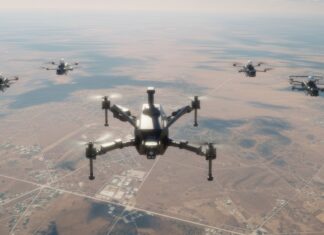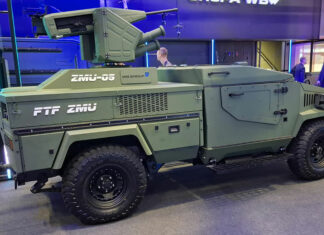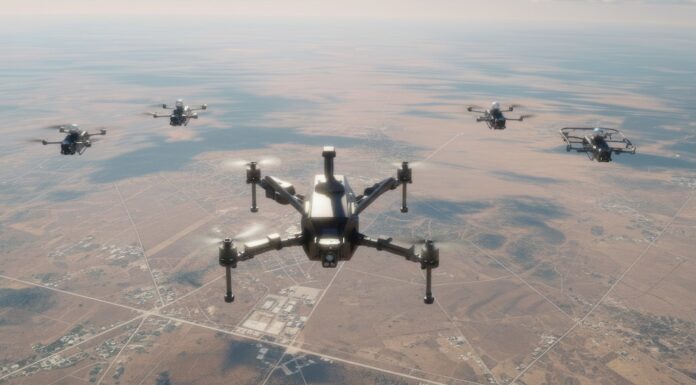This article is part of our weekly DefenseTech Brief.
The integration of artificial intelligence (AI) and autonomous capabilities into military platforms and software continues at a rapid pace, aiming to enhance operational effectiveness, reduce personnel workload, and enable novel concepts of operation across different domains.
In ground systems, Overland AI, initially known for its OverDrive autonomy software stack utilized in various military unmanned ground vehicles (UGVs) like the Textron Ripsaw and General Dynamics S-MET, is now producing its own UGV, the “Ultra”. Designed for logistical support roles such as supply transport, communications enhancement, and drone launching, several Ultra units are reportedly already undergoing military testing. This move signifies the maturation of specialized autonomy software providers, who may potentially expand into integrated hardware solutions, meeting the growing demand for versatile autonomous ground support platforms in the military.
Major platform integrators are also deepening their focus on software and AI through strategic partnerships. General Dynamics Land Systems (GDLS) announced several new collaborations to bolster its combat capabilities. These include partnerships with Applied Intuition for expertise in autonomy and software-defined vehicles, Palantir Technologies for data fusion and user experience, GD Mission Systems and GD Information Technology (GDIT) for AI, cybersecurity, digital engineering, and quantum technology, and Strategic Technology Consulting (STC) for advanced Model Based Systems Engineering (MBSE). This reflects a strategic approach by GDLS to leverage specialized expertise from across the industry, highlighting the centrality of software, AI, data fusion, and digital engineering in developing future ground combat systems and fostering an ecosystem for innovation.
The US Army is embracing advanced simulation for integrating complex AI systems. To incorporate an AI-powered anti-drone capability, the AI Target Detection and Recognition system (AiTDR), into the future XM30 combat vehicle (a replacement for the Bradley), the Army is using Duality AI’s Falcon digital simulation platform. This “digital-first” strategy uses Falcon’s digital twin technology to generate high-quality synthetic data across diverse simulated operational conditions, including varying speeds, weather, drone types, and terrain. This data is used to train and refine the AiTDR’s AI models before physical hardware integration, aiming to improve system development efficiency and reduce the gap between test results and real-world performance. The project involves phased development, iteratively optimizing the AI algorithms and simulation methodologies within the Falcon environment. This approach is expected to shorten development timelines, reduce costs, and allow for robust pre-deployment testing and validation of the C-UAS system, a critical capability for future armored vehicles.
In the air domain, long-term partnerships are solidifying for key autonomous programs. BAE Systems Australia and Boeing Defence Australia signed a 10-year Head Agreement concerning the MQ-28 Ghost Bat Collaborative Combat Aircraft (CCA). Under this agreement, BAE Systems will continue delivering its sovereign Vehicle Management System (VMS) software, which enables the MQ-28’s autonomous flight. BAE also provides elements of the Ground Control Station and the Independent Flight Termination System. This long-term commitment strengthens the strategic partnership established in 2017 and ensures ongoing development and support for the critical flight control systems of Australia’s pioneering uncrewed teaming aircraft program.
These developments collectively signal that software, AI, and autonomy are becoming increasingly core components that define the capabilities of modern military platforms. The emphasis on partnerships suggests that major primes are adopting an ecosystem model, collaborating with specialized tech firms to access cutting-edge capabilities, rather than relying solely on in-house development. Concurrently, the use of advanced simulation and digital engineering tools represents a methodological shift toward more agile, software-centric design, integration, and testing processes, aiming to accelerate the deployment of complex AI-enabled systems.




















